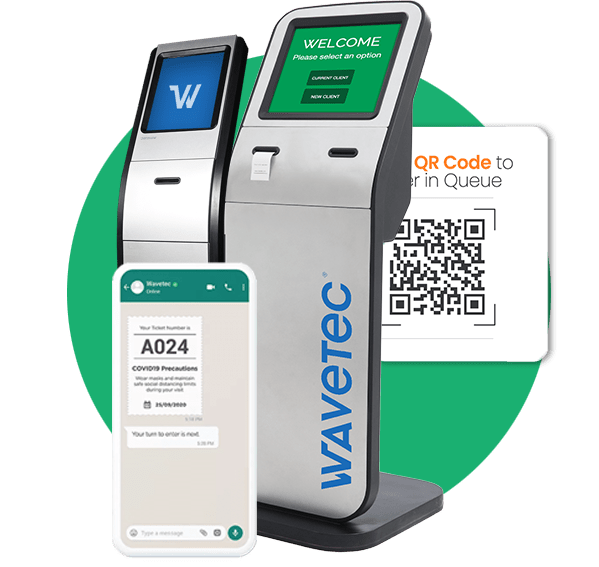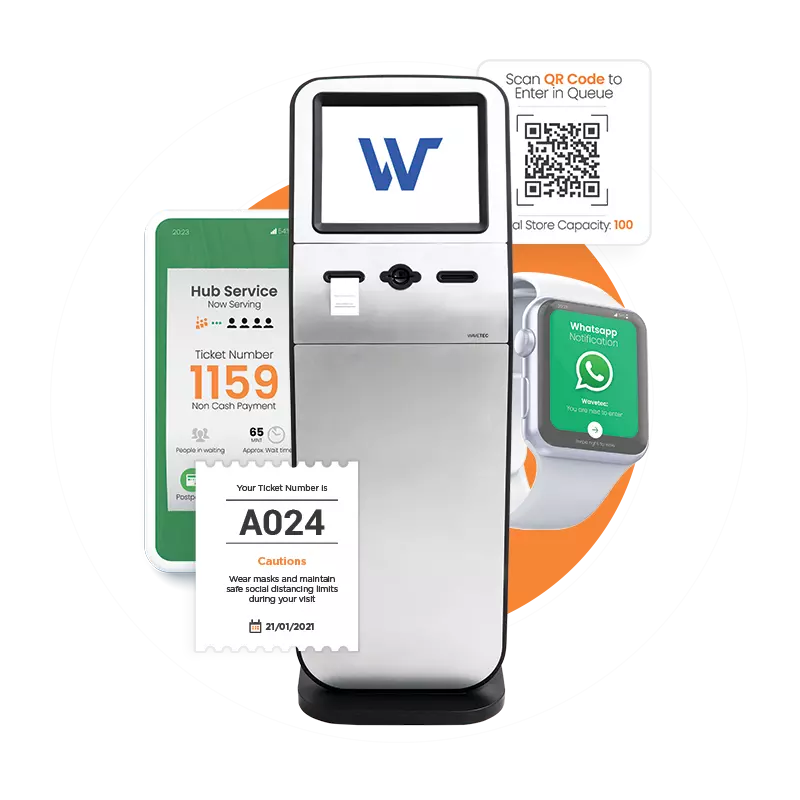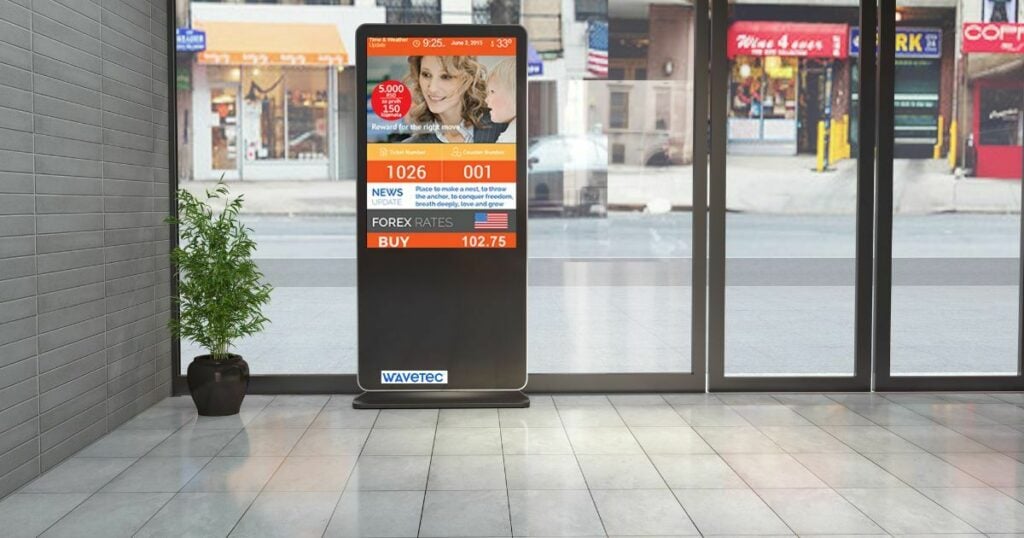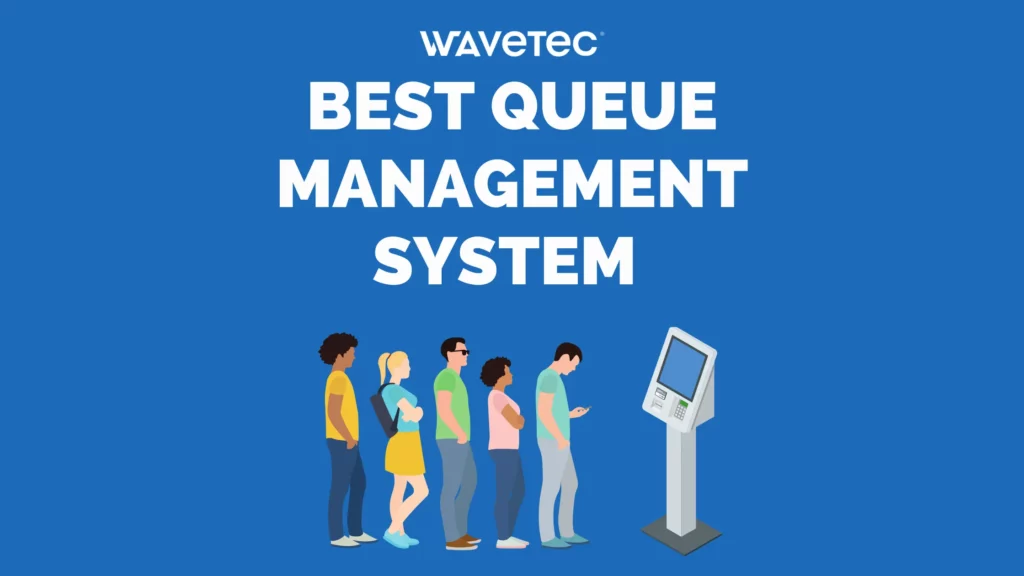In the fast-paced and demanding healthcare environment, efficient patient flow is crucial for timely care and an enhanced overall experience. Queue management systems have emerged as essential solutions to improve operational efficiency in hospitals, clinics, and imaging centers.
Long queues and extended waiting times lead to patient dissatisfaction, increased stress levels, and compromised quality of care, resulting in decreased efficiency.
Implementing a queue management system in healthcare significantly reduces waiting times, enhances operational cost-effectiveness, and improves patient satisfaction.
These systems streamline patient flow, minimize unnecessary delays, and optimize staff allocation, resulting in shorter wait times and efficient service provision.
Real-time updates provided by the system reduce patient anxiety and improve communication. By enhancing patient experiences and reducing wait times, healthcare facilities can attract more customers, enhance their reputation, and maximize business potential.
A queue management system typically includes software and hardware components. The software enables hospital staff to monitor and control patient flow, assigning a unique identifier or ticket to track their position in the queue upon arrival.
Additionally, the system may incorporate tools such as digital signage or display boards to provide patients with real-time information about queue status and estimated waiting times.
Automated notifications keep patients informed and engaged throughout the process. Let’s explore the comprehensive features and benefits of a Queue Management System for Hospitals.
5 Key Features and Functionalities of a Hospital Queue Management System
Let’s explore the essential features and functionalities of a patient queue management system that has changed how patients are managed within healthcare facilities for the better
- Appointment Scheduling and Self-Check-In Options
- Real-Time Queue Monitoring and Status Updates
- Patient Notifications and Alerts
- Staff Assignment and Resource Allocation
- Analytics And Reporting Capabilities for Process Optimization
1. Appointment Scheduling and Self-Check-In Options
Queue management systems in hospitals can ensure a streamlined hospital experience through efficient appointment scheduling via the web and cloud or on WhatsApp as well as self-check-in options.
Patients can conveniently book appointments online, reducing wait times and enhancing convenience.
With user-friendly self-service kiosk solutions or mobile apps, patients can quickly check themselves in, minimizing paperwork and simplifying registration. Implementing such solutions improves operational efficiency, enhances patient satisfaction, and ensures a seamless healthcare journey.
2. Real-Time Queue Monitoring and Status Updates
Any healthcare facility can be kept running smoothly with real-time queue monitoring and status updates. One can stay informed about the patient flow, which helps manage resources effectively, reduce wait times, and keep staff productive.
This ensures a better experience for patients and helps the hospital or clinic stand out among others in the healthcare industry.
This valuable feature enhances transparency, reduces uncertainty, and ensures a smoother and more satisfying healthcare experience, keeping you informed every step of the way as well as your patient.

200 Patients Per Day with Patient Flow Management System
- User-friendly touch kiosk and virtual queue streamline appointments.
- LED displays and speakers ensure timely patient calls.
- Patients are registered in a virtual queue.
Click here to explore how our solutions can deliver shorter wait times and happier patient firsthand.
3. Patient Notifications and Alerts
Patient notifications and alerts offer significant advantages to healthcare facilities. These features keep patients updated about their appointments, wait times, and important updates. This helps reduce patient worry and improves their overall experience.
With automated notifications, staff can focus on providing excellent care instead of spending time on manual communication.
Efficient patient notifications and alerts enhance operational efficiency, minimize missed appointments, and facilitate better resource planning.
By delivering a smooth and proactive patient experience, healthcare facilities can establish a positive reputation, increase patient satisfaction, and drive sustainable growth.
4. Staff Assignment and Resource Allocation
Efficient staff assignment and resource allocation are essential for optimizing operations in any healthcare setting. Hospitals can ensure that resources are effectively utilized by strategically assigning staff members based on their availability, skills, and patient demand.
This process streamlines workflows, reduces wait times, and improves the overall efficiency of care delivery.
Implementing a robust patient queuing system incorporating staff assignment, people counting, and resource allocation features empower healthcare facilities to enhance productivity, optimize patient flow, and deliver high-quality care.

5. Analytics and Reporting Capabilities for Process Optimization
Analytics and reporting capabilities play a crucial role in process optimization within healthcare settings. By leveraging these capabilities, healthcare facilities can gain valuable insights into patient flow, wait times, and service efficiency.
Analyzing the collected data allows administrators to identify bottlenecks, make informed decisions, and streamline operations for improved productivity.
Incorporating analytics and reporting capabilities into a queue management system for clinics and hospitals empowers healthcare facilities to optimize processes, enhance patient satisfaction, and achieve operational excellence.
5 Benefits of Implementing a Patient Queue Management System
Any hospital or healthcare setup can experience remarkable benefits by implementing a patient queue management system.
- Improved Patient Experience and Satisfaction
- Enhanced Operational Efficiency and Staff Productivity
- Reduced Waiting Times and Congestion
- Better Resource Utilization and Allocation
- Data-Driven Decision-Making for Process Improvement
1. Improved Patient Experience and Satisfaction
Effective patient journey leads to improved patient experience and satisfaction. By implementing a comprehensive queue management system, hospitals can streamline processes, reduce waiting times, and enhance communication with patients with regular customer feedback.
Features such as appointment scheduling, self-check-in through kiosks, and real-time updates empower patients, providing them with convenience and control over their healthcare journey.
A well-organized and efficient queue management solution ensures that patients receive timely care, experience shorter wait times, and have a positive interaction with healthcare providers.
This, in turn, boosts patient satisfaction, fosters trust, and contributes to an overall enhanced patient experience in healthcare settings resulting in greater market repute.

2. Enhanced Operational Efficiency and Staff Productivity
A queue management system in hospitals enhances operational efficiency and staff productivity. The system streamlines workflows and reduces administrative burdens by automating processes such as appointment scheduling, self-check-in, and staff assignment.
This allows healthcare staff to focus more on delivering quality care rather than handling manual tasks. Real-time analytics and reporting capabilities provide insights into patient flow and resource utilization, enabling administrators to make data-driven decisions for process optimization.
Improved operational efficiency leads to better patient outcomes and enhances staff productivity, satisfaction, and overall healthcare facility performance.
3. Reduced Waiting Times and Congestion
Virtual queue management systems effectively reduce waiting times and congestion in healthcare facilities. By allowing patients to join a queue remotely and receive real-time updates on their status, these systems eliminate the need for physical waiting areas.
Patients can wait comfortably outside the facility, reducing congestion and maintaining social distancing. Virtual queue management in hospitals ensures a smooth flow of patients and minimizes overcrowding.
By leveraging this innovative solution, healthcare facilities can significantly reduce waiting times, enhance patient satisfaction, and create a safer and more efficient environment for both patients and staff.

4. Better Resource Utilization and Allocation
A robust queue management system for hospitals and clinics enables better resource utilization and allocation within healthcare facilities.
The system analyzes patient data and demand patterns and helps administrators make informed decisions regarding staff scheduling, equipment allocation, and facility capacity.
This ensures that resources are optimally distributed to meet patient needs, reducing bottlenecks and maximizing operational efficiency.
With improved resource utilization and allocation, hospitals can enhance patient care, minimize wastage, and achieve cost savings.
The queue management system serves as a valuable tool for healthcare administrators to strategically manage resources and provide high-quality care while maintaining optimal utilization levels.
5. Data-Driven Decision-Making for Process Improvement
Data-driven decision-making is instrumental in driving process improvement within healthcare facilities. A comprehensive healthcare queue management system collects and analyzes patient flow, wait times, staff performance, and resource utilization data.
By leveraging these insights, administrators can identify bottlenecks, streamline processes, and implement targeted improvements. This data-driven approach allows for evidence-based decision-making, ensuring process changes align with actual needs and outcomes.
By continuously monitoring and analyzing data, healthcare facilities can drive process optimization, enhance operational efficiency, and deliver better patient experiences. Data-driven decision-making is a powerful tool for fostering continuous improvement and delivering high-quality care.
How a Queue Management System Works in Healthcare Industry
A Queue Management System in the healthcare industry facilitates a streamlined patient flow, ensuring a smooth journey from check-in to service delivery.
Step-By-Step Process of Patient Flow Within the System
- Patient Check-in: Patients provide their details and reason for the visit through self-service kiosks or online platforms.
- Queue Assignment: Patients receive a unique identifier, such as a ticket number or digital token, determining their position in the queue.
- Queue Monitoring: Real-time updates on digital displays or mobile apps keep patients informed about their queue status and estimated waiting times.
- Service Delivery: Patients are called or notified when it’s their turn, directing them to the service area for consultation, diagnostics, or treatment.
- Post-Service Actions: Patients may proceed to subsequent steps like medication dispensing, follow-up appointments, or billing, as guided by the system.
By following this organized process, Queue Management Systems in hospitals optimize patient flow, reduce wait times, and enhance overall efficiency in healthcare settings.
Integration With Existing Hospital Systems and Workflows
Queue Management Systems for hospitals and other healthcare facilities seamlessly integrate with existing hospital systems and workflows to enhance operational efficiency and improve patient experience. Here’s how the integration takes place:
- Electronic Health Records (EHR) Integration: The queue management system integrates with the hospital’s EHR system, allowing for easy access to patient information and appointment details. This integration ensures a smooth flow of data between the queue management system and other healthcare systems.
- Staff Management Integration: By connecting with staff management systems, the queue management system can allocate resources, assign staff members, and optimize workflow based on patient demand and staff availability. This integration enables efficient utilization of personnel and streamlines the staffing process.
- Communication Integration: Integration with communication systems allows for seamless coordination and communication between patients, healthcare staff, and administrative personnel. It ensures that important notifications, updates, and alerts are delivered in a timely manner, improving overall communication and reducing delays.
Integrating with existing systems and workflows makes the healthcare queue management system an integral part of the hospital’s operations, enhancing efficiency, reducing manual work, and delivering a more streamlined and patient-centric experience.
Role Of Digital Signage and Displays in Queue Management
Digital signage and displays play a crucial role in queue management, enhancing the overall efficiency and effectiveness of the system. Here are some key roles they play:
- Queue Information: Digital displays provide real-time information on queue numbers, estimated waiting times, and service counter availability. Patients can easily view their position in the queue, helping them stay informed and prepared.
- Directional Guidance: Digital signage solution helps patients navigate the healthcare facility by providing directional guidance. Clear signage directs patients to the appropriate waiting areas, service counters, or auxiliary facilities, reducing confusion and improving the overall patient experience.
- Announcements and Notifications: Digital displays deliver audio or visual announcements, notifying patients when it’s their turn or providing important updates. This minimizes the need for manual announcements and ensures clear and timely communication.
- Advertising and Educational Content: Digital signage can display advertisements, health-related educational content, or general information about hospital services. This engages patients while they wait and provides valuable information, improving patient satisfaction and enhancing the overall waiting experience.
By leveraging digital signage and displays, hospital queue management systems create a visually informative and engaging environment for patients. They enhance communication, minimize confusion, and contribute to a more efficient and satisfying healthcare experience.
Queue Management System For Hospital – FAQs
Can A Queue Management System Integrate with Electronic Health Records (EHR) Systems?
Yes, a queue management system can integrate with Electronic Health Records (EHR) systems, enabling seamless access to patient information and appointment details and ensuring a smooth flow of data between systems.
What Data and Analytics Are Provided by A Queue Management System for Hospitals?
A hospital queue management system provides data and analytics on patient flow, wait times, service efficiency, and resource utilization. This valuable information helps identify bottlenecks, optimize processes, and make data-driven decisions for continuous improvement.
Is it possible to Customize a Queue Management System to Meet Specific Hospital Needs?
A queue management system can be customized to meet specific hospital needs. From branding and design elements to workflow configurations and reporting requirements, customization options allow hospitals to tailor the system according to their unique requirements and preferences.
How does a clinic queue system handle walk-in patients?
A clinic queue system can efficiently manage walk-in patients by assigning them a place in the queue, providing estimated wait times, and ensuring they are seen in an organized manner.
Final Words
Implementing a robust queue management system for hospitals and clinics alike is a transformative solution that leverages the benefits of digital transformation in healthcare. This advanced system enhances the patient experience, optimizes operational efficiency, and drives overall excellence in healthcare delivery.
Hospitals can revolutionize their queuing processes by streamlining patient flow, integrating with existing systems, and leveraging advanced features like patient scheduling, real-time monitoring, and data analytics.
The healthcare queue management system empowers hospitals to reduce waiting times, improve resource allocation, enhance staff productivity, and provide personalized care to patients.
With its ability to seamlessly integrate with Electronic Health Records (EHR) systems and be customized to specific hospital needs, this system has become an indispensable tool for modern healthcare facilities.
Embracing a hospital queue management system paves the way for a more efficient, patient-centered, and successful healthcare environment.
BOOK A FREE DEMO






